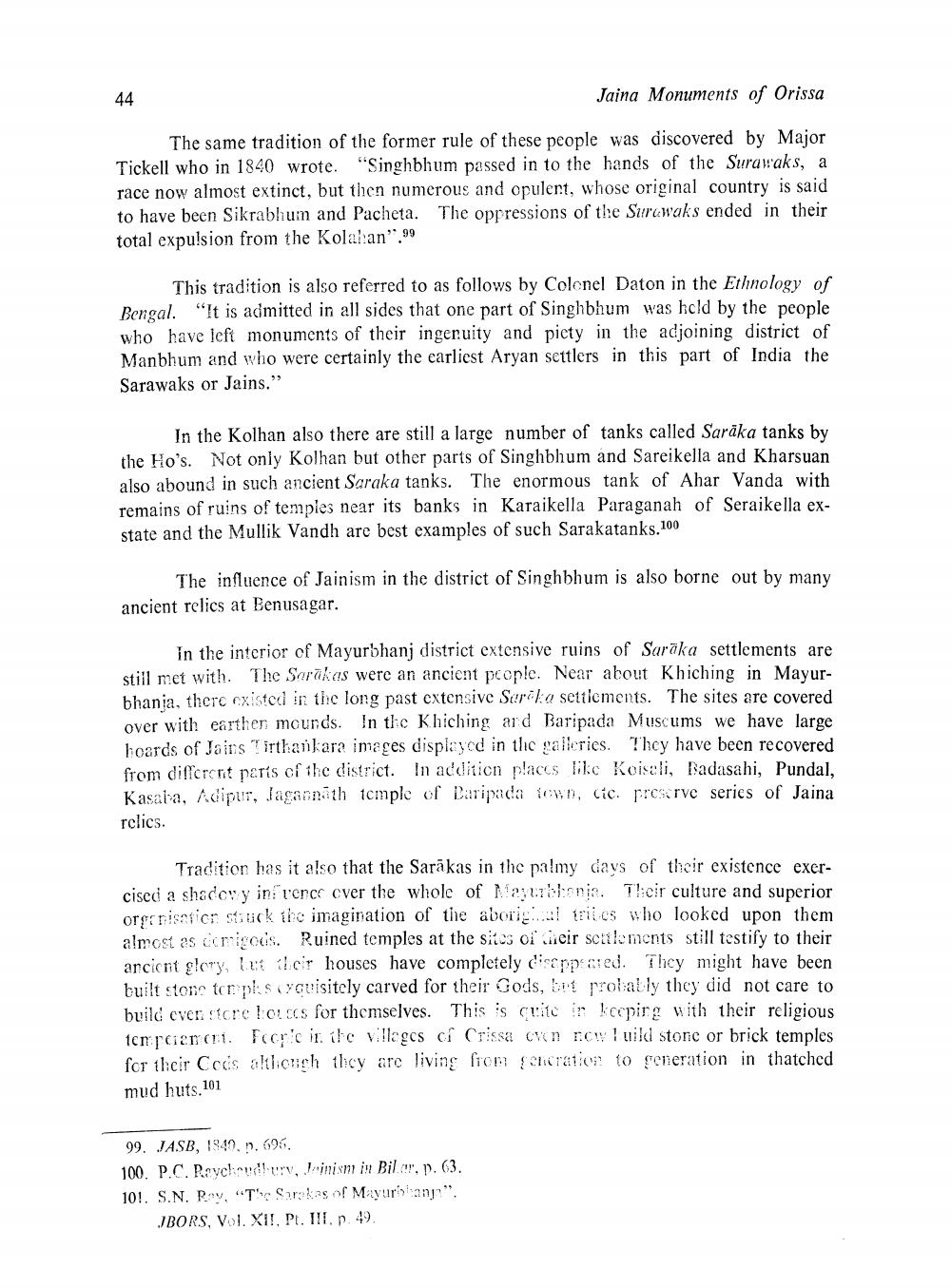________________
44
Jaina Monuments of Orissa
The same tradition of the former rule of these people was discovered by Major Tickell who in 1840 wrote. "Singhbhum passed in to the hands of the Surawaks, a race now almost extinct, but then numerous and opulent, whose original country is said to have been Sikrabhum and Pacheta. The oppressions of the Sarawaks ended in their total expulsion from the Kolalan","
This tradition is also referred to as follows by Colonel Daton in the Ethnology of Bengal. "It is admitted in all sides that one part of Singhbhum was held by the people who have left monuments of their ingenuity and picty in the adjoining district of Manbhum and who were certainly the carliest Aryan settlers in this part of India the Sarawaks or Jains."
In the Kolhan also there are still a large number of tanks called Saraka tanks by the Ho's. Not only Kolhan but other parts of Singhbhum and Sareikella and Kharsuan also abound in such ancient Saraka tanks. The enormous tank of Ahar Vanda with remains of ruins of temples near its banks in Karaikella Paraganah of Seraikella exstate and the Mullik Vandh are best examples of such Sarakatanks.100
The influence of Jainism in the district of Singhbhum is also borne out by many ancient relics at Benusagar.
in the interior of Mayurbhanj district extensive ruins of Sarika settlements are still met with. The Sarakas were an ancient people. Near about Khiching in Mayurbhanja, there existed in the long past extensive Sarika settlements. The sites are covered over with earthen mounds. In the Khiching and Baripada Muscums we have large hoards of Jains Tirthankara images displayed in the galleries. They have been recovered from different parts of the district. In addition places like Keiseli, Badasahi, Pundal, Kasaba, Adipur, Jagannath temple of Daripada town, cic. preserve series of Jaina
relics.
Tradition has it also that the Sarākas in the palmy days of their existence exercised a shodevy invener over the whole of Mayurbhanjn. Their culture and superior organisation stuck the imagination of the aborigal triles who looked upon them almost as demigods. Ruined temples at the sites of their settlements still testify to their ancient glery, Let their houses have completely dierppeared. They might have been built stone templs cxquisitely carved for their Gods, bet probably they did not care to build even store hoces for themselves. This is quite in keeping with their religious tempement. Feeple in the villeges cf Crissa even new build stone or brick temples for their Ceds although they are living from generation to generation in thatched mud huts.10 101
99. JASB, 1840, p. 695.
100. P.C. Raychaudhury, Jainism in Bilar, p. 63.
101. S.N. Rey, "The Sarakas of Mayurbhanj".
JBORS, Vol. XII, Pt. III. p. 49.




